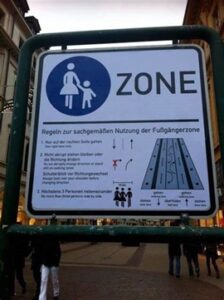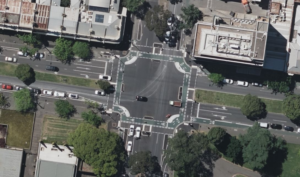News
The Road Safety Roundabout – The Global Approach
As deaths on Australian roads continue to increase, what is the rest of the world doing to combat unnecessary loss of life on their roads?
We’ve had a look at the initiatives that we think could be supported more widely in Australia as we seek to not just reduce the 1,266 deaths from road crashes and the $27bn economic cost to Australia before you factor in the emotional trauma and destroyed lives.
Initiatives from Around the World
Sweden – Vision Zero
Not just famed for Volvo’s history of safety breakthroughs, Vision Zero, which was launched in Sweden in the 1990s, is a road safety project that aims to achieve zero fatalities or serious injuries on the roads. Vision Zero’s approach is holistic and multifaceted, involving everything from improved road infrastructure and safer vehicle technologies to enhanced enforcement of traffic laws and public awareness campaigns. It has inspired similar initiatives in cities worldwide, including New York City and London. Australia has committed to zero in the 2020s, to be achieved by 2050.
France – Automated Enforcement
France has seen a substantial reduction in road fatalities partly due to its extensive use of automated speed cameras. Introduced in 2003, these cameras have been critical in enforcing speed limits across the country. The visibility and high likelihood of getting caught have significantly deterred speeding, which is a major cause of fatal road accidents. While drivers may question the benefit, for Australia, surely there can be greater use of technology, particularly in high-risk areas such as School Zones, near retirement complexes, around hospitals and more.
Germany – Pedestrian Zones and Traffic Calming Measures

Cities across Germany have adopted extensive pedestrian zones and traffic calming measures such as road narrowing, speed bumps, and raised pedestrian crossings to reduce vehicle speeds and protect road users, particularly in urban areas. These measures have proven effective in decreasing the number and severity of incidents and we believe could easily be applied to Australian cities, towns and even some major suburban centres.
Europe – ETSC’s PIN Program
The European Transport Safety Council’s Road Safety Performance Index (PIN) Programme monitors member countries’ road safety performance. It shares best practices and helps countries implement effective road safety measures. Countries participating in this program have seen significant improvements in road safety, attributed to the targeted policy recommendations and shared practices. Perhaps a more collaborative approach and standardisation between Australia’s states and territories could result in similar outcomes. Driving between each jurisdiction should be a seamless experience, yet we have different road rules, speed limits and even unique circumstances, such as Melbourne’s beloved hook turns.
UK – Road Safety Audits
The UK employs road safety audits during the initial design and operation of road infrastructure projects. These audits are systematic procedures that ensure all safety aspects are considered, leading to safer road designs and significantly reducing fatalities and incidents. We see this approach in Australia, but not at the scale in which the UK deploys road safety audits.
While each of the above has the potential to be part of Australia’s ongoing commitment to Vision Zero by 2050 there is one nation we can’t leave out of our list of the best ideas to learn from: The Netherlands.
The Netherlands
This is particularly true when we look at what they are globally famous for – cycling infrastructure. Here are their leading approaches to protecting all road users.
- Dedicated Cycling Lanes and Paths: The Netherlands has an extensive network of cycling lanes that are often physically separated from motor vehicle traffic. This separation significantly reduces the interaction between cyclists and cars, leading to fewer incidents and safer cycling conditions.
- Intersection Design: Dutch intersections are specifically designed to protect cyclists. These include separate bicycle traffic lights, clearly marked cycling paths, and safe zones for cyclists at intersections, reducing the risk of collisions with vehicles.

- Bicycle Highways: The concept of “bicycle highways” has been developed to offer fast, direct, and uninterrupted routes for cyclists. These are wide, well-maintained paths that often have priority over other types of traffic at crossings, encouraging higher cycling speeds and reducing delays without compromising safety.
- Bike Parking Facilities: To support the high volume of cyclists, cities across the Netherlands have implemented large, secure bike parking facilities, particularly around major public transport hubs like train stations. These facilities encourage cycling by making it easy and safe for people to store their bicycles.
- Woonerf (Living Streets): Originally developed in the Netherlands, Woonerf are streets where cars are considered “guests” and the speed limit is as low as walking pace. These streets prioritise pedestrians and cyclists, greatly increasing safety for non-motorized road users.

It is exciting to see some of these initiatives when travelling overseas, but what is superb is when initiatives like this are rolled out in Australia, as has been the case with Melbourne’s first ‘Dutch Style Intersection at Albert and Lansdowne Street in the city’s east.

So, if we are serious about achieving safer roads and fewer fatalities as a nation, we think we can learn a lot from the best in the world and build on the initiatives we are seeing supported and rolled out across the country.
What global idea do you think would be best suited to Australia?
